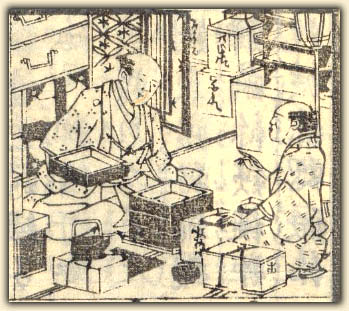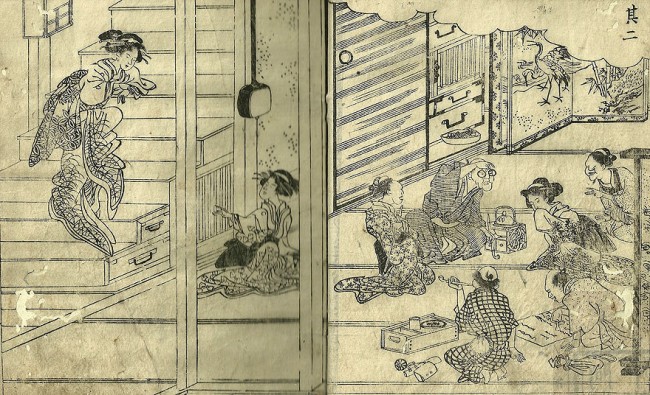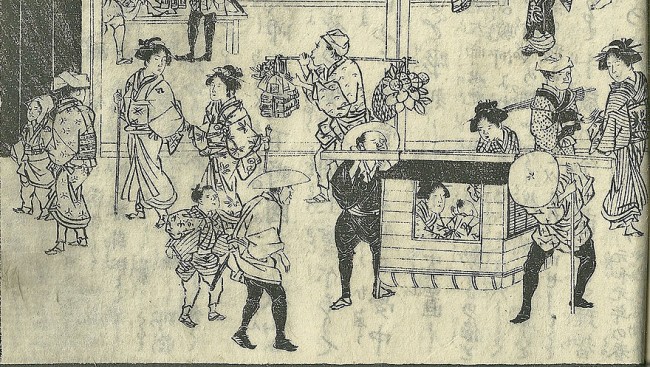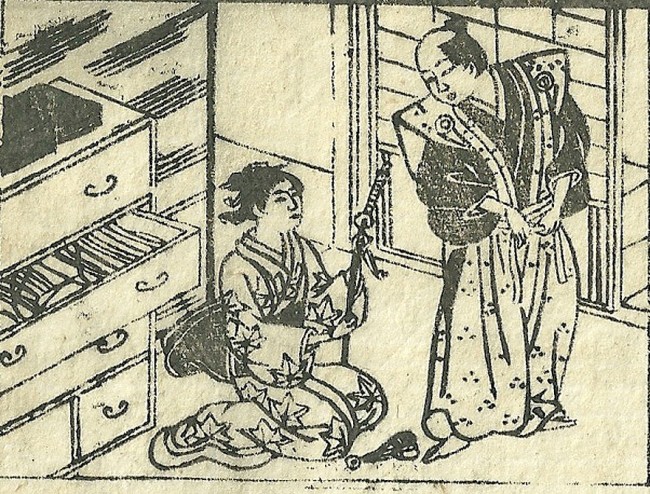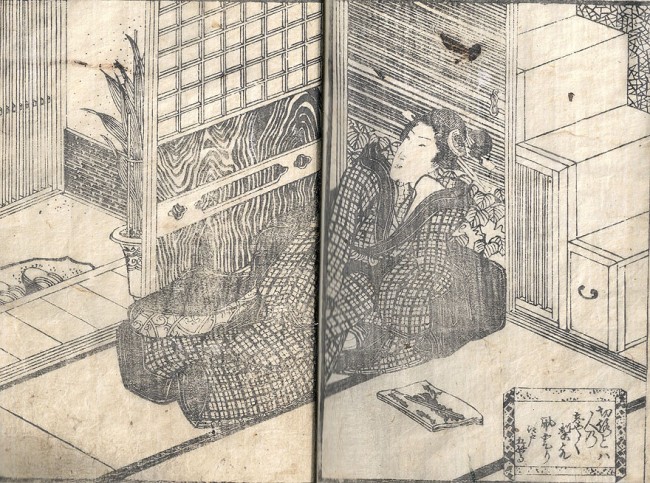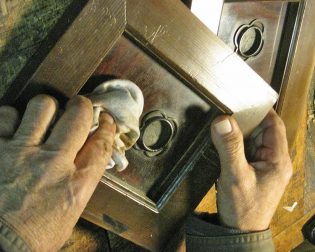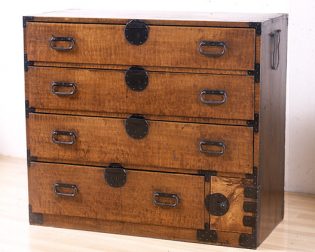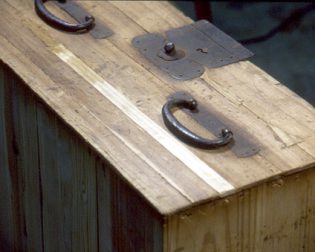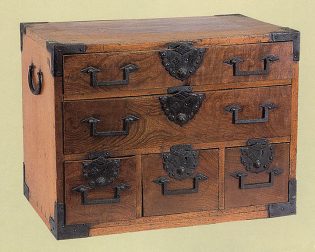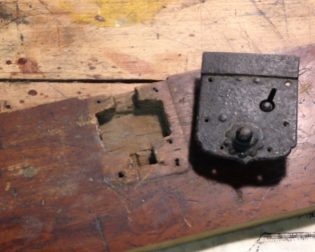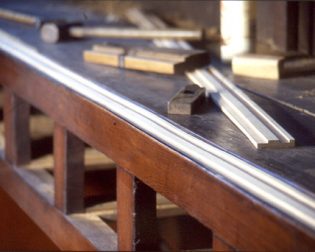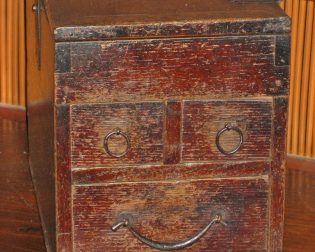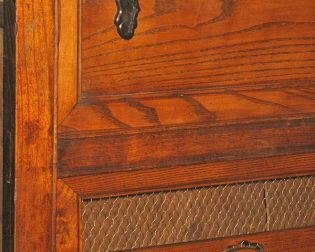Tansu are the wooden boxes and chests that originated in Japan’s Edo period (1603-1868).
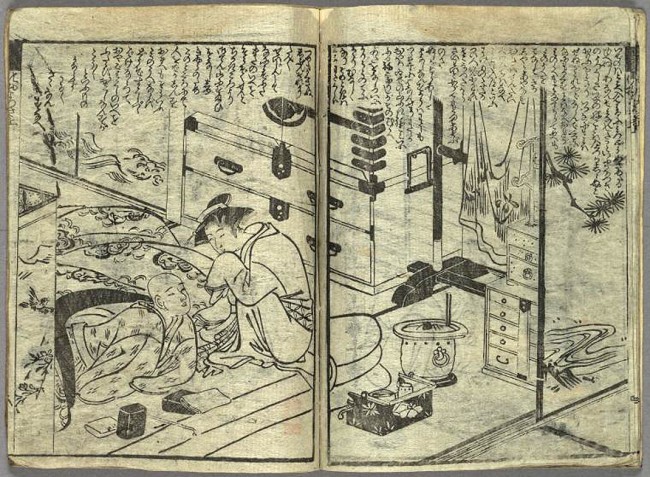
The woodworking traditions of Japan date back as far as the Shinto shrines at Ise from the 5th century A.D. to the portrait sculpture of the Kamakure period (1185-1333).
While there are a vast number of books dedicated to the architecture and sculpture of Japan, there are only a handful of books dedicated to Japanese cabinetry. However, tansu chests and cabinets represent an age of economic growth for Japan.
The houses of the Edo period were varied, from large rural A-frames made by country carpenters, to the machiya (eel homes) of urban centers such as Kyoto. During the Edo period, especially the first 150 years, standards of living rose. Newly wealthy merchants had the means and desire to mimic higher-class tastes, which included the designs and character of shoin architecture.
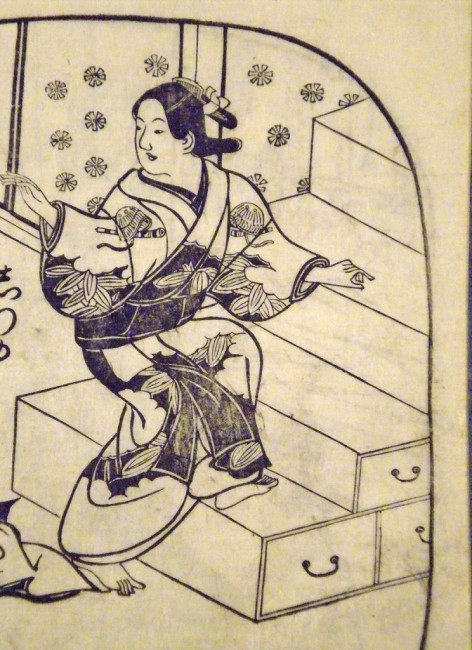
Yoshikiyo 1702 album detail kaidan 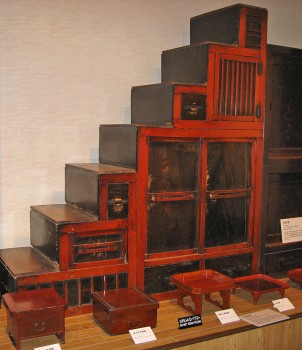
kaidan
Throughout Japan there has always been a sharp distinction between festive days and ordinary days, and the distinction was applied to clothing, household furnishings, eating utensils, ornaments, food and drink and just about everything else…
The number of furnishings and accessories needed by Japanese households of the past was further increased by the practice of changing many elements of interior decor to coincide with the seasons.
The history of architecture in Japan is intimately linked to Buddhism. An import from China during the thirteenth century, Zen’s austerity and spiritual virtues suggest that a room devoid of furnishings is not a useless room at all, but is more valuable than one filled with furnishings.
So we see that Tansu were generally not fixtures in the home the way westerners think of a room of furniture. Yet, as will be seen, the Edo period was a period of more and more contrivances and possessions. The kura (masonry-walled fireproof storehouses) ensured that most of these items were seasonally stored.
